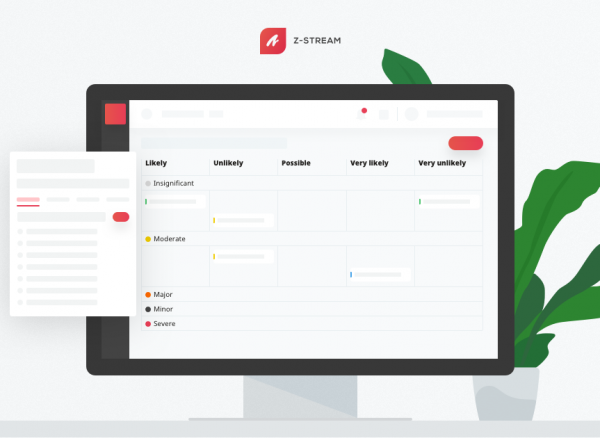
Being productive means maximizing output or work accomplished, which means utilizing all of your resources to their fullest – and speaking of resources, no resource is as precious as time itself.
Managing time well is essential for productivity. Taking 10-12 minutes to plan your activities can save you around 2 hours per day. Dedicating a few minutes of your morning to planning out your day can be surprisingly fruitful.
But where to start? What schedule to follow? Most importantly, how do you prioritize what needs to be done?
The answer is our secret weapon!
People call it the Eisenhower matrix. It’s named after Dwight D. Eisenhower, Supreme Allied Commander in Europe during World War II and Thirty-fourth President of the United States. He used this matrix to make important military and political decisions and prioritize what needed to be addressed first, which is why this visualization grid carries his last name.
Before he succeeded Harry Truman as president Eisenhower was a prized general during the Second World War and had the distinction of being the first-ever head of NATO forces in Europe.
The Eisenhower matrix – What is it?
The Eisenhower matrix is an organizational tool which helps people prioritize tasks so they can schedule their work effectively and accomplish key goals. The matrix is designed like a grid so you can understand it in a glance.

Difficult choices were part and parcel of Eisenhower’s routine as a military decision-maker. This is why he designed a grid to identify and prioritize his main duties of the day, based on their value and deadline or time-frame.
Since Eisenhower used it, the Eisenhower matrix became much more commonly used by organizations, professionals, and even goal-oriented individuals in their private lives. Anyone can apply the Eisenhower matrix’s principles in their life to plan, delegate, prioritize, and schedule their daily chores, errands, and overall work.
This grid is also known as Eisenhower Time Matrix because people use it to improve their time management skills.
How does one use the Eisenhower matrix?
The Eisenhower matrix consists of four sections or quadrants.
This four-quadrant Eisenhower matrix lets you split your list of responsibilities into smaller chunks and prevents you from getting overwhelmed.
Each quadrant is associated with an importance level and an urgency level.
The assignments are classified vertically and horizontally, with regards to how important or urgent the matters are. This provides clarity to rank preferences and decide what to work on first, what comes after it, which duties can be assigned to another person, and what you can put off for later or forget about altogether.
The four-quadrant Eisenhower matrix consists of:
- Quadrant 1: Urgent and Important
- Quadrant 2: Not Urgent but Important
- Quadrant 3: Urgent but Not Important
- Quadrant 4: Neither Urgent Nor Important
Urgent vs. Important Tasks
Knowing the difference between urgent vs. important tasks lets you effectively implement the tenets of the Eisenhower matrix.
Many confuse urgency with importance, which results in procrastinating on important tasks owing to the fact that they aren’t pressing, while wasting time and energy on urgent tasks which aren’t as important.
Simply put, urgent tasks have a short deadline, whereas important tasks have significant consequences.
Let’s discuss each quadrant individually.
Quadrant 1: Urgent & Important
Quadrant 1 is the intersection of r both categories: items that are both important and urgent.

Bear in mind that this section is not for important tasks and urgent tasks – it is exclusively dedicated to matters that are BOTH important as well as urgent.
Therefore, a task that is important but not urgent is not meant to be in Eisenhower quadrant 1. Similarly, if a job is urgent but not important doesn’t belong here either. An assignment must be consequential and have an approaching deadline to end up here.
Quadrant 2: Not Urgent & Important
Quadrant 2 of the Eisenhower Matrix holds important tasks that aren’t urgent.

Assignments and responsibilities listed here result in significant consequences, but there are no short-term timelines associated with them. People often put these off for later because they don’t cause as much anxiety as urgent tasks.
But a common mistake here is never doing these at all. This can perpetually slow down your progress, and potentially reduce your productivity.
It can be helpful to remind yourself to spend more time in this quadrant whenever possible. You should start working on things listed here right after finishing with items in quadrant 1.
Quadrant 3: Urgent & Not Important
The Eisenhower Matrix’s Quadrant 3 is a category where we can put urgent tasks having no significant consequences.

The duties listed in this section can be delegated to another person since they don’t have much importance – for example, getting bills photocopied is usually not that important to CEOs; so others can do it for them. Whereas, for example, reaching out to potential clients and signing key agreements might be important tasks for a CEO that no one else should take care of.
You might not be a CEO, but your current position and your goals determine what you need to do on an urgent basis.
Quadrant 4: Not Urgent & Not Important
This quadrant contains neither important tasks nor urgent tasks.

The engagements mentioned here have no deadline and hold little importance. Not doing these has few or no consequences.
Quadrant 4 shows you which activities may end up wasting your time and energy when they don’t really need your attention. Tasks listed in this section are better eliminated or canceled, especially in cases where you are overwhelmed.
However, on some occasions, when you are on leave, or when you’ve got spare time at hand, this list can help you stay busy. Basically, these are activities that are nice to work on but by no means critical or even of core importance.
Viewing the entire Eisenhower matrix after each quadrant has been filled can enable you to carry out better analysis of urgent vs. important tasks. This can help you manage your precious time, thereby maximizing your output.
Tips When Using The Eisenhower matrix
Since you’ve got the grasp of the Eisenhower matrix and its uses, try implementing its principles in your daily life.
A word of advice, keep three points in mind to get the most out of it:
- Make a single Eisenhower matrix for all aspects of life, whether personal, professional, or any other. People might make a separate Eisenhower matrix for every aspect of their lives. This might backfire and result in a clash in schedules. Acknowledge that you are a single person, which is why having one Eisenhower time matrix suits you. You have 24 hours for all aspects of life, not 24 hours a day for each.
- Keep the amount of work achievable. Don’t pile up your responsibilities for each Eisenhower quadrant. It can overwhelm, demotivate, and stress you out when you see an incomplete list of seemingly important tasks. Limit your number of tasks in each list to keep it healthy.
- Use management tools alongside the Eisenhower matrix. Using management tools like Z-Stream can greatly increase your organization’s performance and productivity. Why limit progress to yourself when you can accomplish more with your team?
The Eisenhower matrix is used to boost your productivity and optimize work time for individuals and organizations alike.
The four-quadrant Eisenhower matrix is a creative, simple, and convenient method of having a holistic view of your investments in terms of time and energy. It gives you an idea of which duties to deliver on time and which can wait.
Productivity requires keeping track of your daily progress, management, and organizing everything accordingly – which is why it is better to plan and track your goals using tools like Z-Stream.
It lets you build Eisenhower matrices, map out your team’s plans, and also helps manage work better by clarifying responsibility for goals, tracking progress, and measuring output.



